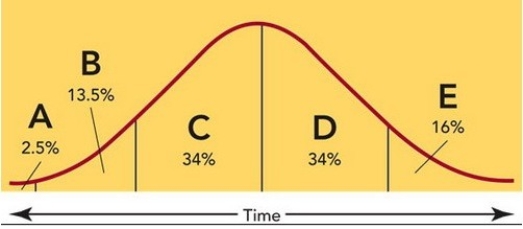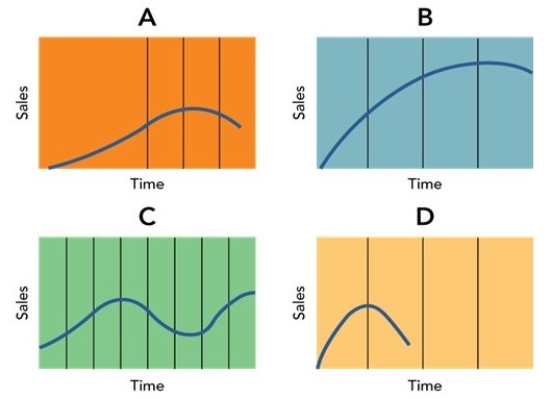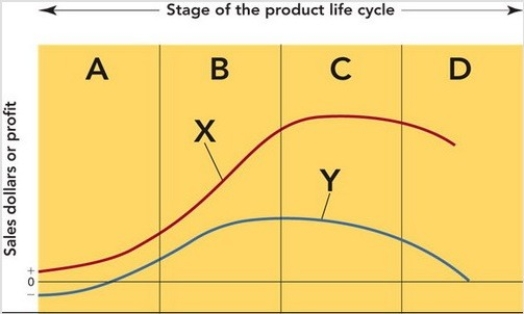A) product form.
B) product class.
C) product line.
D) product mix.
E) product item.
Correct Answer

verified
Correct Answer
verified
Multiple Choice
If a customer is reluctant to try a new product because she's afraid it might make her ill,the company is most likely facing a(n) ________ barrier.
A) usage
B) risk
C) value
D) emotional
E) psychological
Correct Answer

verified
Correct Answer
verified
Multiple Choice
Multibranding refers to a branding strategy in which a firm
A) gives each product a distinct name as a method to appeal to various target markets.
B) uses different brand names for the same product across multiple countries.
C) uses one name for all its products in a product class,though each is intended for a different market segment.
D) produces products but sells them under the brand name of a wholesaler or retailer.
E) contractually,and for a fee,allows other firms to use its brand name,requiring that the product be made to its specifications.
Correct Answer

verified
Correct Answer
verified
Multiple Choice
Which of the following is an example of a product in the decline stage of the product life cycle?
A) analog TVs
B) smartphones
C) 3D printers
D) health insurance
E) tablet devices
Correct Answer

verified
Correct Answer
verified
Multiple Choice
DiGiorno rising crust pizza has been available in the freezer sections of supermarkets for quite a while.The product's recent introduction of a DiGiorno cheese-stuffed crust to its line of pizzas is an example of
A) a market-product grid.
B) diversification.
C) market modification.
D) product class extension.
E) product modification.
Correct Answer

verified
Correct Answer
verified
Multiple Choice
There are several reasons a consumer might be reluctant to adopt a new product.For example,a consumer might be reluctant to adopt a new product because of a usage barrier,which occurs when
A) there is no incentive to change.
B) there are physical,economic,or social risks.
C) there are cultural differences.
D) the financial commitment is too great.
E) the product is not compatible with existing habits.
Correct Answer

verified
Correct Answer
verified
Multiple Choice
Figure 11-5
 -As product adopters,innovators
-As product adopters,innovators
A) have a fear of debt and use neighbors and friends as information sources.
B) are skeptical and have below average social status.
C) are deliberate and use many informal social contacts.
D) are leaders in social settings and have a slightly above average education.
E) are venturesome,higher educated,and use multiple information sources.
Correct Answer

verified
Correct Answer
verified
Multiple Choice
Companies can choose from several different branding strategies.Sears,with its Kenmore appliances and Craftsman tools,is using a ________ strategy.
A) retailer branding
B) multiproduct branding
C) multibranding
D) private branding
E) mixed branding
Correct Answer

verified
Correct Answer
verified
Multiple Choice
When consumers think of Harley-Davidson,the image is of a masculine nonconformist.With Vespa motor scooters,the image is of a brainy environmentalist.Both Vespa and Harley-Davidson
A) have brand personalities.
B) avoid brand subcultures.
C) are logotypes.
D) use co-branding.
E) use product personification.
Correct Answer

verified
Correct Answer
verified
Multiple Choice
The Tesla Motors Model S,an all-electric-powered automobile,is in which stage of its product life cycle?
A) growth
B) maturity
C) introduction
D) decline
E) accelerated development
Correct Answer

verified
Correct Answer
verified
Multiple Choice
Generally,the length of time it takes for a product category to move from the introduction stage to the decline stage of its product life cycle is
A) 18 months.
B) 5 to 10 years.
C) about 20 years.
D) about 30 years.
E) dependent of a variety of factors,including the type of product.
Correct Answer

verified
Correct Answer
verified
Multiple Choice
Figure 11-3
 -The product life cycle shown in Box C in Figure 11-3 above is an example of a ________ product.
-The product life cycle shown in Box C in Figure 11-3 above is an example of a ________ product.
A) high-learning
B) fashion
C) low-learning
D) fad
E) generalized
Correct Answer

verified
Correct Answer
verified
Multiple Choice
What is the marketing objective for the growth stage of the product life cycle?
A) minimize promotion
B) increase market share
C) stress differentiation
D) gain awareness
E) maintain brand loyalty
Correct Answer

verified
Correct Answer
verified
Multiple Choice
Figure 11-1
 -Figure 11-1 above represents the stages of the product life cycle.What does the curve labeled Y represent?
-Figure 11-1 above represents the stages of the product life cycle.What does the curve labeled Y represent?
A) total variable costs
B) total fixed costs
C) total industry profit
D) total industry sales revenue
E) total research and development costs
Correct Answer

verified
Correct Answer
verified
Multiple Choice
The central element of the marketing strategy for Pez Candy,Inc. ,is the
A) price.
B) breath mint.
C) availability.
D) container.
E) fulfillment.
Correct Answer

verified
Correct Answer
verified
Multiple Choice
Brand extension is the practice of
A) manufacturing a product under a new name that consumers will view as an entirely new product line.
B) manufacturing a new product with the same brand name for a new market segment in the same product class.
C) manufacturing accessory products for the base offering,such as Barbie clothes for Barbie dolls.
D) licensing another firm to manufacture modified versions of the original product.
E) applying the current brand name to enter a completely different product class.
Correct Answer

verified
Correct Answer
verified
Multiple Choice
Sealy,the self-proclaimed largest manufacturer of mattresses in the United States,recently set out to redefine its place in the bedrooms of America.No longer was it going to be known as simply a mattress company.Now the name Sealy was going to be known as the world's leading "sleep wellness provider." This is an example of
A) reverse marketing.
B) demarketing.
C) repositioning.
D) resegmenting.
E) positioning.
Correct Answer

verified
Correct Answer
verified
Multiple Choice
Figure 11-5
 -As product adopters in the diffusion of innovation,members of the late majority
-As product adopters in the diffusion of innovation,members of the late majority
A) have a fear of debt and use neighbors and friends as information sources.
B) are skeptical and have below average social status.
C) are deliberate and use many informal social contacts.
D) are leaders in social settings and have a slightly above average education.
E) are venturesome,higher educated,and use multiple information sources.
Correct Answer

verified
Correct Answer
verified
Multiple Choice
Which of the following statements about Gatorade is most accurate?
A) The name Gatorade was chosen because as an energy drink it "got you out the gate-fast."
B) The name Gatorade was coined by a team who lost to the University of Florida Gators,attributing the Gator win to the "aid" they got from the rehydrating beverage.
C) The green color of the original lemon-lime Gatorade was based on the University of Florida's alligator mascot.
D) Gatorade was developed by PepsiCo as a cause-marketing project to provide resources for women's sports at the University of Florida as a result of the passage of Title IX in 1972.
E) Gatorade is the only sports drink marketer that doesn't use sports celebrities to endorse its products.
Correct Answer

verified
Correct Answer
verified
Multiple Choice
The fourth and final step in the sequential process of building brand equity is to
A) develop positive brand awareness.
B) establish a brand's meaning in the minds of consumers.
C) elicit the proper consumer responses to a brands identity and meaning.
D) create an intense,active,and loyal consumer-brand connection.
E) reward loyal customer behavior.
Correct Answer

verified
Correct Answer
verified
Showing 21 - 40 of 366
Related Exams